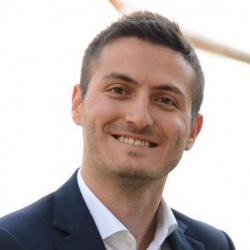Discover more about the topics and technologies that were discussed at the 2019 conference, via a series of exclusive interviews with a selection of our expert speakers.
 Stoyan Nikolov Stoyan Nikolov is a test analyst at McLaren Applied Technologies in London, UK, where he is responsible for the testing activities on connectivity driving projects. He will give a presentation about the challenges in testing connected vehicles.
Stoyan Nikolov Stoyan Nikolov is a test analyst at McLaren Applied Technologies in London, UK, where he is responsible for the testing activities on connectivity driving projects. He will give a presentation about the challenges in testing connected vehicles.
Tell us about your presentation.
The complexity of connected vehicles increases significantly with the introduction of multiple connectivity channels and sensors. The requirements for robust and uninterruptible connections provoke the need for multiple modems fixed to multiple network operators, and being able to switch among various wireless networks (such as 3G, 4G and 5G). The introduction of geofence-triggered software features requires GPS/GNSS connectivity in addition to the mobile network. Testing the connectivity is a challenging task that requires a realistic simulation of the mobile network conditions and GPS/GNSS. This presentation will cover the challenges of testing the connectivity channels for connected vehicles, the simulation scenarios to be considered and the challenges of simulating a fleet.
What makes testing connectivity so challenging? How much data does a typical test consume?
Testing a connectivity device on the system level requires physical simulation of its connectivity channels, where the challenge comes with the necessity to simulate close-to-reality mobile network and GPS/GNSS conditions in a controlled environment to represent a real journey. Simulating a real-world radio frequency [RF] environment will require simulating handover between connectivity cells, dynamically changing signal strength and introduction of RF noise. Using the public mobile network operators and the public GPS instead of simulation will require gigabytes or terabytes of mobile data and at the same time will be limited to the network condition available in the test lab.
How can McLaren help – where do you see the best opportunities to improve current testing and simulation?
Here in McLaren Applied Technologies the development of connected vehicles is aided by a custom-built RF test environment, giving us the flexibility to simulate various network conditions and scenarios. However, we believe the testing of a connected vehicle does not stop with testing the radio communication. It continues with testing the integration of various connectivity channels and their robustness under imperfect conditions and reaches the moment of testing the data center infrastructure.
What circumstances are the greatest challenge to maintaining vehicle connectivity?
The greatest challenge to maintaining connectivity sits in the ‘gray area’ connectivity regions, where actually most of the highways are. The perfect storm for reduced connectivity will be in the rural regions of the UK, driving on a highway at 120km/h and passing through tunnels on a rainy day.
How do you ensure vehicle safety if a network fails?
Currently no safety-critical features depend on constant connection to the internet since the mobile network infrastructure is not mature enough and does not provide 100% connectivity coverage. Nevertheless, the telemetry data being generated by the connected vehicles is highly valuable and gets buffered when the network fails and retransmitted when the connectivity is established again.
Stoyan Nikolov, test analyst, McLaren Applied Technologies will give his presentation,The challenges in testing connected vehicles, on Day 1 of Stream 4: Connectivity - 5G, V2X and Cybersecurity. For an up-to-date program, click here. To book your delegate pass, click here.